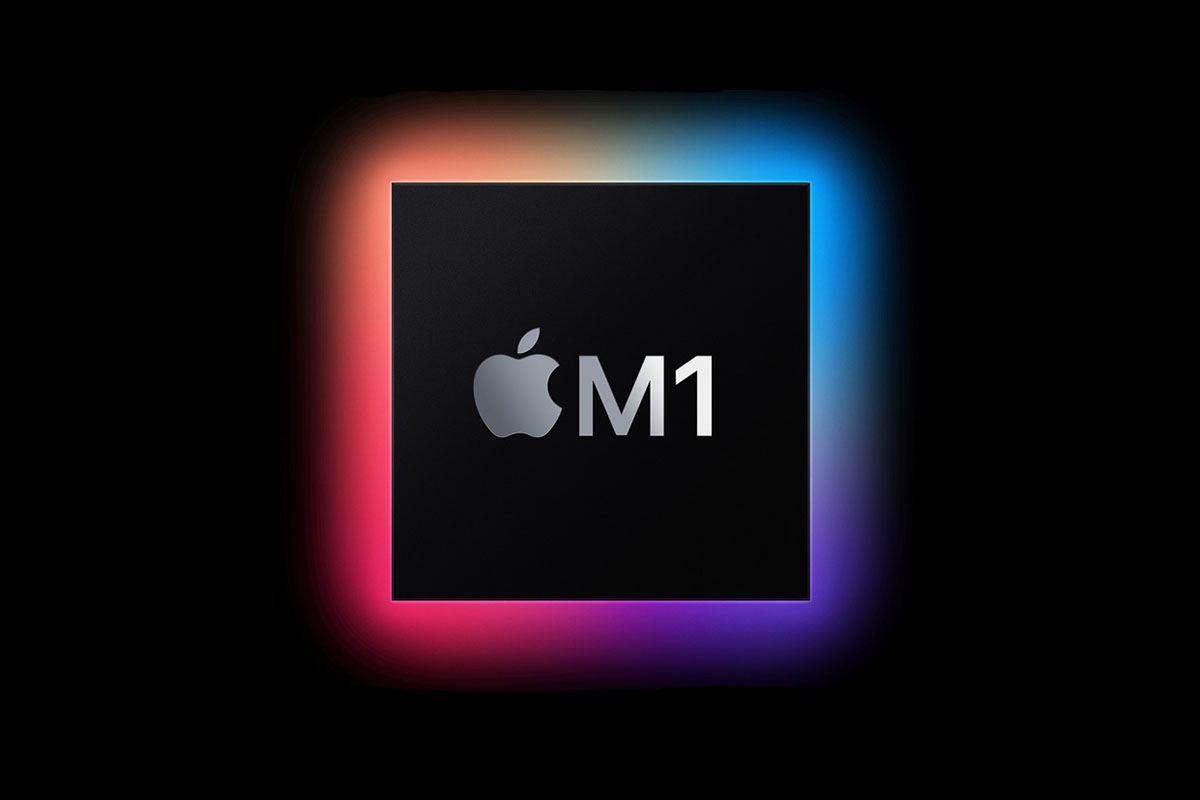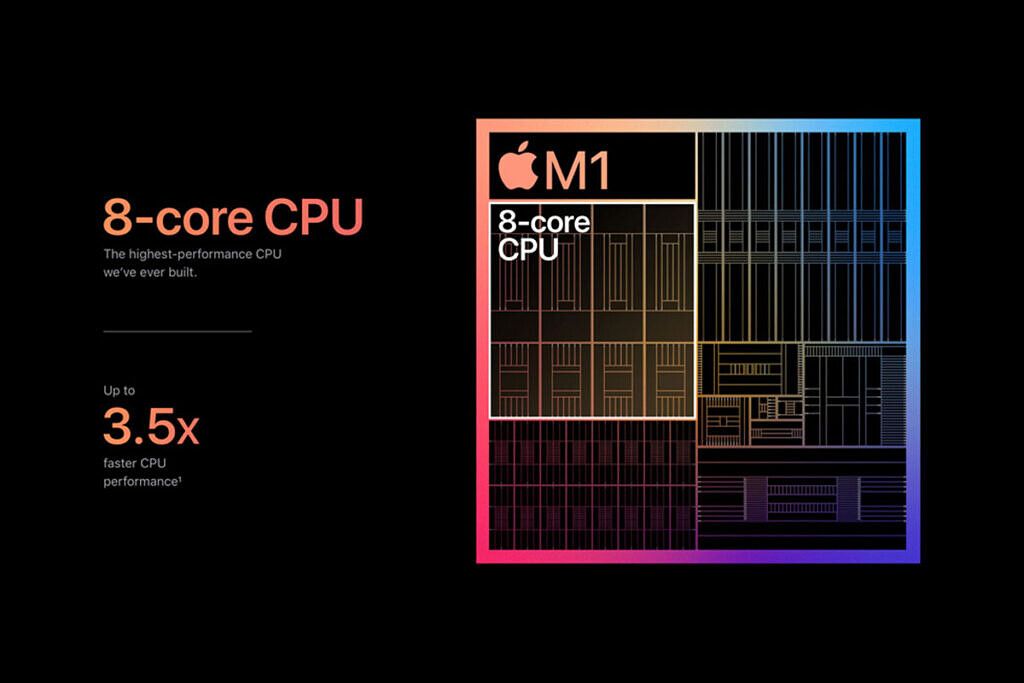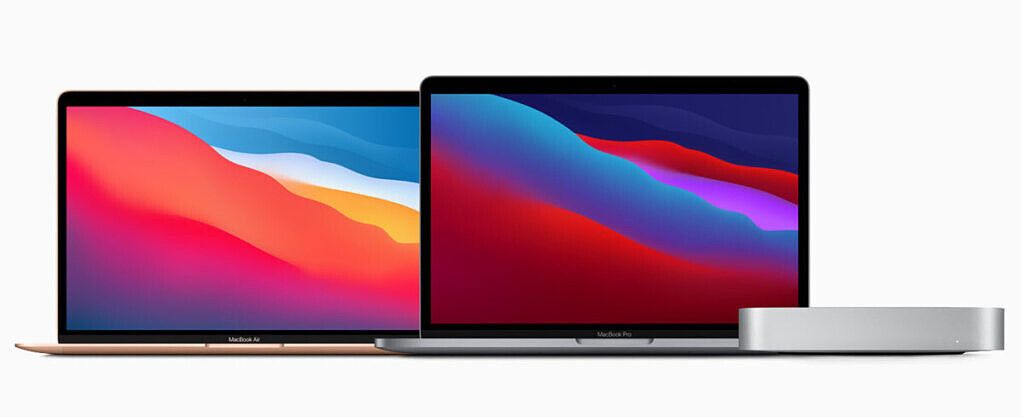As promised, Apple at its ‘One More Thing’ event has officially launched its custom ARM-based chipset for its Mac lineup. The new M1 is the first Apple Silicon system-on-chip (SoC) that is designed based on the company’s successful ARM-based mobile chips seen on the iPhone, iPad, and Apple Watch. Apple had first spoken about its plans to launch its custom silicon during the WWDC 2020 event back in June and they had promised that the first Mac product would be launched by the end of this year. Today, the company unveiled the first three products powered by its new silicon. Apple has announced that the new MacBook Air, MacBook Pro 13, and the Mac mini are the first to feature the new M1 chipset.
Apple's M1 SoC
Before we talk about the new products, let’s take a look at the new M1 chip. It is fabricated on a 5nm process and includes an 8-core CPU that includes four performance cores and four efficiency cores. Apple claims that the M1 is capable of 11 trillion operations per second (TOPS). The chip also comes with its own Neural Engine for machine learning (ML) tasks, offering 15x faster performance. This would help in giving a boost in tasks like video analysis, voice recognition, and image processing. As for graphics processing, the M1 features an 8-core GPU with 128 execution units capable of handling up to 24,576 concurrent threads for 2.6 teraflops of performance. This means that one can expect smooth playback of multiple 4K video streams as well as improved gaming performance. As for power consumption, Apple says the new M1 chip offers better performance at a much lower power consumption rate; for comparison, Apple claims that one can expect improved performance compared to current generation laptop chips at one-fourth of the power.
New MacBook Air, MacBook Pro 13, and Mac Mini
The new M1 chip is the beginning of Apple’s transition from Intel to ARM. Apple has begun the process by announcing three products that will now be powered by the company’s new custom chipset. The first is the MacBook Air, which is exactly the same as the existing Intel-powered variant but with the new SoC. According to Apple, the transition to the new chip assures a huge uplift in performance, making it the most powerful MacBook Air that you can buy. The best part is that it will continue to start at $999. The new MacBook Air will now offer 3.5x faster CPU performance than the previous generation and up to 5x faster graphics performance. As for machine learning workloads, the new Air will be 9x faster. Thanks to the new storage controller, Apple assures 2x faster SSD performance. Despite having a fanless design, it is said to remain cool in most operations. Customers can expect some obvious improvements in battery life as well. Apple’s numbers claim 15 hours of wireless web browsing and up to 18 hours of video playback. Other updates include an improved ISP (image signal processor) for the webcam, support for P3 wide color, USB 4/Thunderbolt ports, and Wi-Fi 6.
The MacBook Pro 13 also features the M1 and is said to be 2.8x faster than the previous generation model. The GPU offers 5x faster performance for improved graphics while designing a graphics-intensive game or a new product. The new Neural Engine offers up to 11x faster machine learning operations. Apple claims, thanks to the new M1 chipset, the MacBook Pro 13 is up to 3x faster than the best-selling Windows laptop in its class. In terms of battery life, one can expect up to 17 hours of wireless web browsing and up to 20 hours of video playback. Those numbers do sound pretty steep, so we would wait for reviews to be the judge of that. As for the design, it looks just like the existing 13-inch MacBook Pro, however, you do get new studio-quality mics for clearer recordings and calls, a new ISP just like the new MacBook Air, and two Thunderbolt ports with USB 4 support that now supports Apple’s Pro Display XDR in full 6K resolution. Pricing starts at $1,299 or $1,199 for students.
Lastly, Apple has taken its M1 chip to the Mac mini. It includes an advanced thermal design to sustain performance while staying silent and cool. The M1 on the new Mac mini offers 3x faster performance than the previous generation, while the 8-core GPU delivers up to a 6x increase in performance. Customers can expect 3x faster compilation of code in Xcode and up to 6x faster rendering of a complex timeline in Final Cut Pro. Apple claims that compared to the best-selling Windows desktop in its price range, the Mac mini can deliver up to 5x faster performance despite being one-tenth the size. The PC also comes with two Thunderbolt ports with USB 4, and yes, you can hook up a Pro Display XDR in full 6K resolution. The Mac mini is priced at $699, which is $100 less than the previous-generation quad-core model.
Additionally, Apple announced that macOS Big Sur will be available for users starting November 12. This means that all the supported Mac products should start receiving the update on Thursday.



